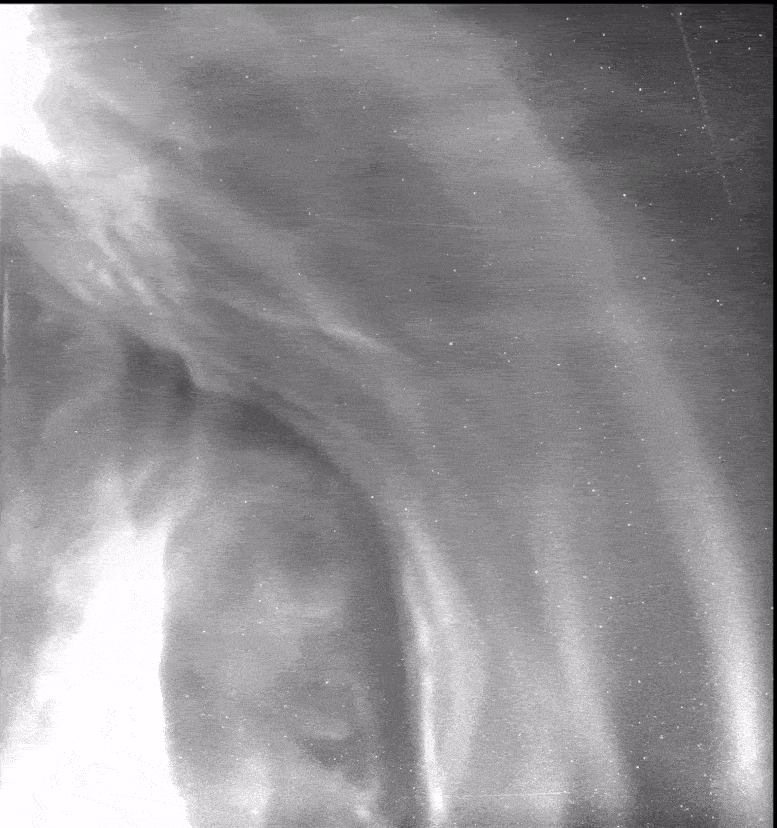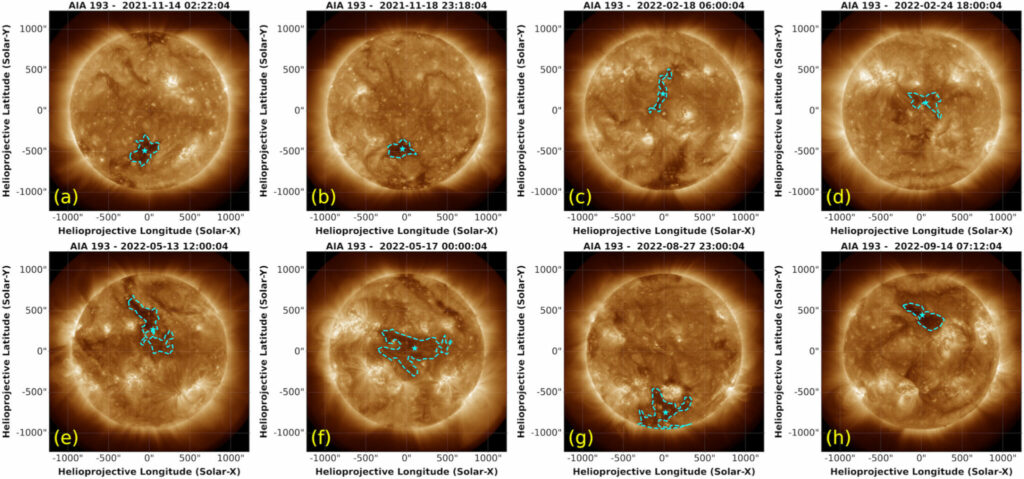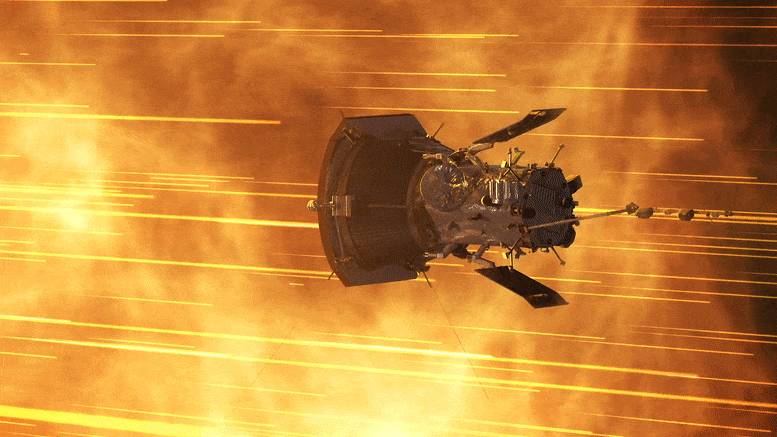In a significant scientific breakthrough, NASA’s Parker Solar Probe recently navigated its way through a colossal coronal mass ejection (CME), shedding light on a theory that has intrigued astrophysicists for the past two decades. The implications of this remarkable observation extend to space weather predictions and the safety of vital Earth technologies.
On the 5th of September, 2022, NASA’s Parker Solar Probe achieved a remarkable milestone as it gracefully traversed one of the most potent coronal mass ejections (CMEs) ever documented. This event, besides being a feat of engineering prowess, holds immense importance for the scientific community. It has provided empirical support for a theory that has remained unverified for twenty years, shedding light on the complex interaction between CMEs and interplanetary dust, which, in turn, has far-reaching consequences for predicting space weather. The results of this groundbreaking research have been recently published in The Astrophysical Journal.
Table of Contents
Understanding the Interaction Between CMEs and Interplanetary Dust
As early as 2003, a scientific paper proposed the intriguing notion that CMEs might interact with the interplanetary dust encircling our Sun, potentially carrying these dust particles with them on their journey through space. CMEs, originating from the Sun’s outer corona, play a pivotal role in shaping space weather, a phenomenon with the potential to endanger satellites, disrupt communication and navigation systems, and even cripple power grids on Earth. Delving deeper into the dynamics of how CMEs interact with interplanetary dust particles could provide vital insights into predicting the speed and impact of these solar events on Earth.
For the first time, Parker Solar Probe has offered tangible evidence of this phenomenon. As Guillermo Stenborg, an astrophysicist at the Johns Hopkins Applied Physics Laboratory, explains, “These interactions between CMEs and dust were theorized two decades ago, but had not been observed until Parker Solar Probe viewed a CME act like a vacuum cleaner, clearing the dust out of its path.” The Applied Physics Laboratory played a central role in building and operating the spacecraft.
The Influence on Interplanetary Dust
Interplanetary dust consists of minute particles originating from asteroids, comets, and even planets. It permeates our solar system and is responsible for phenomena like the zodiacal light, a faint glow observable before sunrise or after sunset. During Parker’s encounter with the CME, it displaced interplanetary dust particles up to approximately 6 million miles from the Sun, which corresponds to about one-sixth of the distance between the Sun and Mercury. Intriguingly, this dust was quickly replenished by the ongoing influx of interplanetary dust circulating throughout the solar system.

The Significance of In-Situ Observations
Parker’s in-situ observations were instrumental in this groundbreaking discovery, as characterizing the dynamics of dust in the wake of CMEs from a distance is an intricate task. Moreover, the data collected by Parker’s observations could potentially shed light on related phenomena in the lower regions of the solar corona, such as coronal dimming resulting from low-density areas, often observed following CMEs.
Observational Techniques and Future Insights
Scientists observed the interaction between the CME and dust by detecting reduced brightness in images captured by Parker’s Wide-field Imager for Solar Probe (WISPR) camera. This phenomenon occurs because interplanetary dust particles reflect light, thereby amplifying brightness wherever they are present.
Identifying this reduced brightness necessitated meticulous computation of the average background brightness in WISPR images across several similar orbits, filtering out regular variations caused by solar streamers and other corona-related changes.
While this effect has been observed only in connection with the September 5th event, scientists speculate that dust depletion may be a characteristic feature of the most potent CMEs. Nevertheless, further research is required to gain a deeper understanding of the physics governing this interaction and its implications for space weather prediction.

A Bright Future for Solar Research
Parker Solar Probe, in the course of its mission, completed its sixth Venus flyby, employing the planet’s gravitational pull to bring it even closer to the Sun. This development aligns with the Sun’s approach to solar maximum, a period in its 11-year cycle characterized by heightened sunspot activity and solar events. As solar activity intensifies, scientists anticipate more opportunities to witness these rare celestial phenomena and explore their potential effects on our Earth’s environment and the broader interplanetary medium.
In conclusion, the Parker Solar Probe’s recent encounter with a powerful CME has opened a new chapter in our understanding of space weather and the interactions between CMEs and interplanetary dust. This groundbreaking research not only validates a long-standing scientific theory but also holds the promise of enhancing our ability to predict and mitigate the impact of space weather on critical Earth technologies. NASA’s continuous efforts in solar research, as exemplified by the Parker Solar Probe mission, bring us closer to unraveling the mysteries of our solar system and its influence on our planet.
Frequently Asked Questions (FAQs) about Solar Probe CME Interaction
What is the Parker Solar Probe, and what did it recently accomplish?
The Parker Solar Probe is a NASA spacecraft designed to study the Sun’s outer corona. Recently, it achieved a significant milestone by passing through a powerful coronal mass ejection (CME). This event provided crucial insights into the interaction between CMEs and interplanetary dust.
Why is the interaction between CMEs and interplanetary dust important?
Understanding this interaction is vital because CMEs have a substantial impact on space weather, which can affect technologies on Earth, including satellites, communication systems, and power grids. The interaction with interplanetary dust can influence the speed and behavior of CMEs, making it essential to predict their effects accurately.
What is the significance of the 20-year-old theory mentioned in the article?
The 20-year-old theory suggested that CMEs could interact with and possibly carry interplanetary dust. However, this theory had not been observed until the Parker Solar Probe’s recent encounter with a CME, which provided empirical evidence to support it.
What role did Parker’s in-situ observations play in this discovery?
Parker’s in-situ observations were instrumental because studying dust dynamics in the wake of CMEs from a distance is challenging. These observations allowed scientists to witness the CME acting like a “vacuum cleaner” as it cleared dust from its path, confirming the theory.
How does interplanetary dust affect space weather prediction?
Interplanetary dust can influence the shape and speed of CMEs, making accurate space weather prediction more challenging. By understanding the dynamics of this interaction, scientists can improve their forecasts of when and how CMEs may impact Earth and its technologies.
What potential implications does this research have for the future?
Studying the interaction between CMEs and interplanetary dust could lead to more accurate space weather prediction models. Additionally, as the Sun approaches solar maximum, scientists hope to witness more such phenomena, which could further our understanding of solar activity and its effects on our planet.
What is the source of the article, and where can I find more information?
The article was published in The Astrophysical Journal, and you can access it using the provided DOI: 10.3847/1538-4357/acd2cf. For additional information and updates on the Parker Solar Probe mission, you can visit NASA’s official website and the Johns Hopkins Applied Physics Laboratory’s website.
More about Solar Probe CME Interaction
- NASA’s Parker Solar Probe Mission
- The Astrophysical Journal Article (DOI: 10.3847/1538-4357/acd2cf)
- Johns Hopkins Applied Physics Laboratory – Parker Solar Probe
- NASA’s Living With a Star Program



3 comments
cool article abt parker solar probe & CMEs. dusty stuff in space, never thot abt it. NASA’s mission, sounds legit.
nasa’s parker solar probe, wow, gr8 stuff, cool mission to studie the sun, CMEs n dust, big deal for science, vry important 4 tech on earth!
parker solar probe, big deal. CMEs & dust, tht’s sumthing. nasa rocks, giv me more info on this!